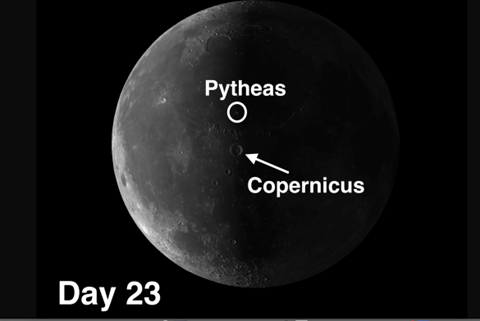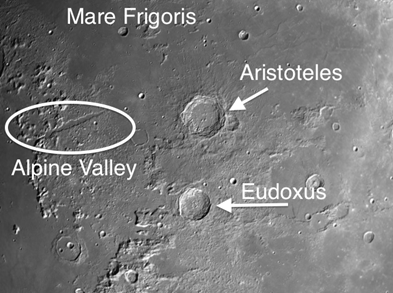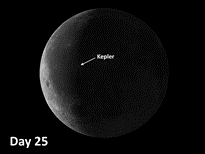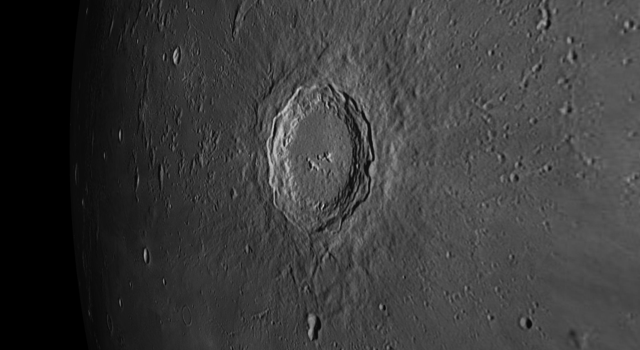The week of February 19-25 takes us from Day 11 to 16. This week we will highlight the moon crater Langrenus, viewable on Sunday night. Langrenus & Vendelinus: [SE/K-L16; L=61°E] These craters are the first two segments of the Great
Langrenus & Vendelinus Moon Craters: First Two Segments of Great Eastern Chain









